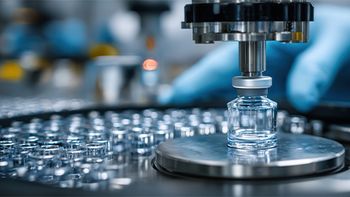
American Cryostem licenses its collection, processing and storage technology for cell therapy
Proprietary processes combine cryogenic and room-temperature steps for adipose tissue
Compared to the intricate processes involved in cell therapies like CAR-T autologous treatments (or most other pharma processes), the stem cell world is something of a Wild West, with individual practitioners extracting, manipulating and injecting stem cells for many types of orthopedic and disease-treatment applications. One company, American Cryostem Corp., though, is attempting to bring some order to parts of the business by developing a more rigorous method for collecting, processing, storing and transporting adipose tissue and adipose-derived stem cells, and developing treatments associated with them.
The company has just won a licensing agreement with Cryoviva Ltd., a Thailand-based cord-blood biobank, to employ Cryostem’s Cellect tissue-collection system and AtGraft tissue processing. Cellect, explains COO Anthony Dudzinski, provides a customized box along with a maintenance medium for tissues and cells; the box is an easy-to-handle setup for physicians and patients. Intriguingly, the collection part does not involve refrigerated or cryogenic temperature control—the company reasoned at its outset (in 2008) that if human tissues were happiest at blood temperature, then a collection process at room temperature should be sustainable. To that end, the company developed the packaging and proprietary maintenance medium.
Upon receipt at a central lab, another branded Cryostem process, called AtCell, is used to separate adipose tissue and stem cells (of various types). The processing includes a variety of patented cell expansion (growth) media, which the company says are xeno-free (i.e., no biomaterials derived from animal sources, such as the bovine fetal serum often used in cellular research). Depending on end use, pure tissue or cells are returned to the clinic for application (e.g., cosmetic procedures), or stored cryogenically. “Our market research shows that in most of the world, patients greatly prefer to deal with autologous cells from their own bodies, rather than the various allogenic processes that have been proposed,” notes Dudzinski.
Dudzinski says that the company is taking a comprehensive approach to regenerative medicine, developing a variety of growth media for human tissues, and beginning work on investigational new drug (IND) applications to put before FDA in the near future. In the meantime, Cryostem has grown a network of 200 US physician offices involved in tissue transfer procedures and autologous cell storage; it also has licensing agreements in Hong Kong, Tokyo, Japan and China.
Newsletter
Stay ahead in the life sciences industry with Pharmaceutical Commerce, the latest news, trends, and strategies in drug distribution, commercialization, and market access.




